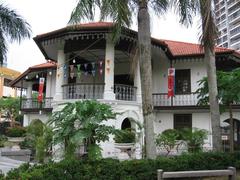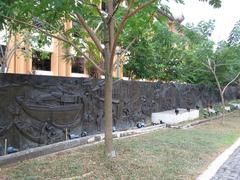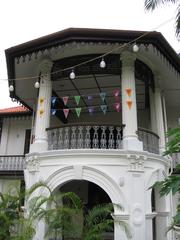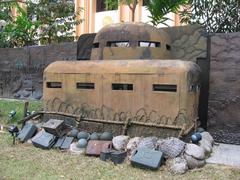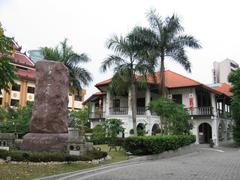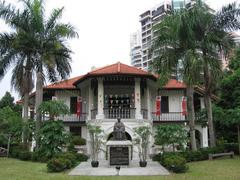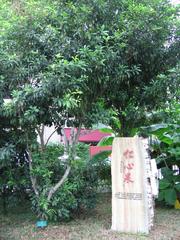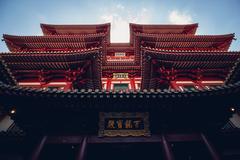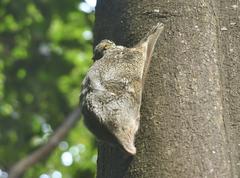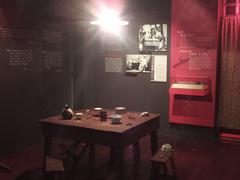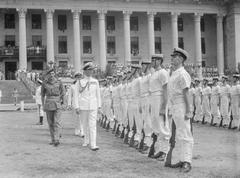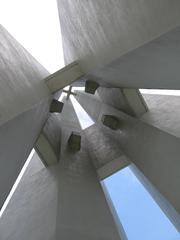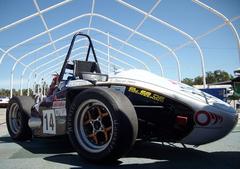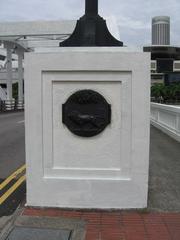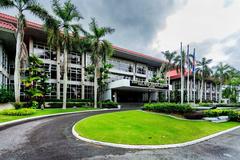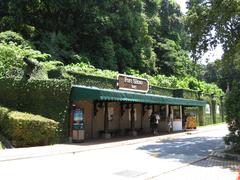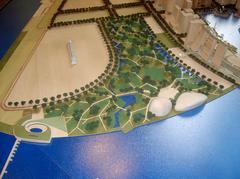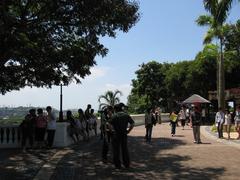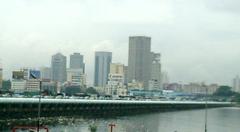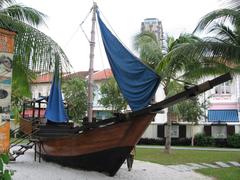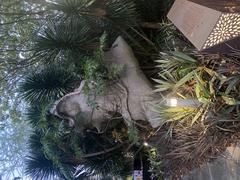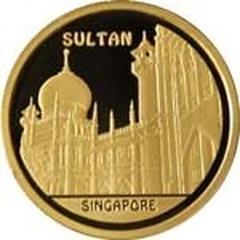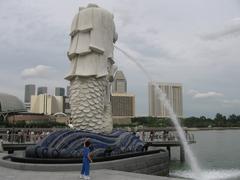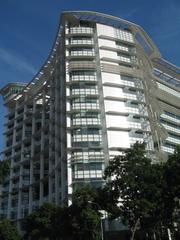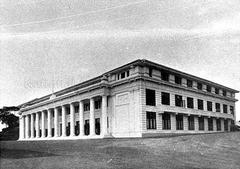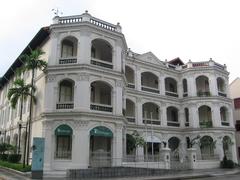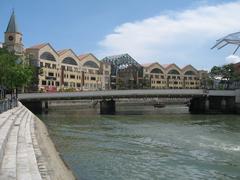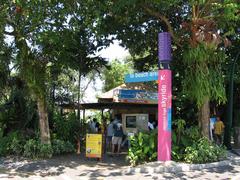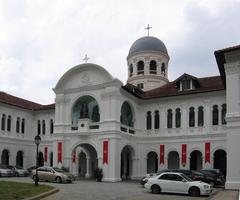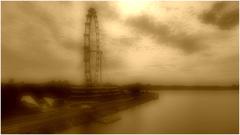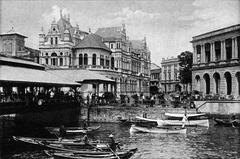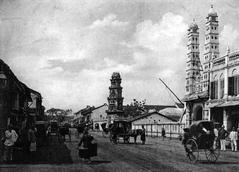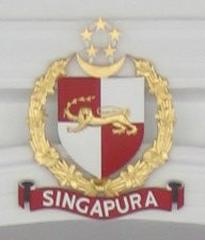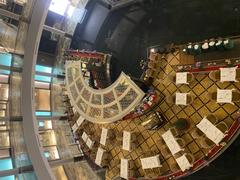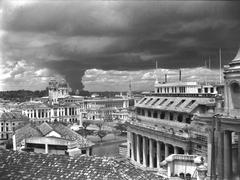
Sun Yat Sen Nanyang Memorial Hall Visiting Hours, Tickets & Visitor Guide (2025): Explore a Pillar of Singapore’s Heritage
Introduction
The Sun Yat Sen Nanyang Memorial Hall, located at 12 Tai Gin Road in Singapore’s historic Balestier district, is a nationally significant heritage site that chronicles the revolutionary spirit of Dr. Sun Yat Sen and the essential role played by Singapore’s Chinese community in shaping the modern history of China and Southeast Asia. Housed in a well-preserved colonial villa known as Wan Qing Yuan (晚晴园), the Memorial Hall offers visitors a rich tapestry of interactive exhibitions, tranquil gardens, and a direct connection to the region’s vibrant multicultural heritage.
This guide provides comprehensive information on visiting hours, ticketing, accessibility, guided tours, and practical tips—essential for planning a meaningful and memorable visit to one of Singapore’s most important historical landmarks.
Historical Background
Origins and Evolution
Built in 1902 by merchant Boey Chuan Poh, the villa was originally a symbol of the rising Chinese elite in colonial Singapore. In 1905, Teo Eng Hock purchased the property, renaming it Wan Qing Yuan as a gesture of filial piety. Its transformation into a revolutionary base began in 1906, when Dr. Sun Yat Sen used the villa as a Southeast Asian headquarters for the Tongmenghui (Chinese Revolutionary Alliance). Here, pivotal strategies and fundraising efforts for the 1911 Xinhai Revolution—the movement that toppled the Qing dynasty—were orchestrated, with significant support from local Chinese leaders like Tan Chor Lam and Lim Nee Soon.
After its revolutionary heyday, the villa passed through various hands before being donated to the Singapore Chinese Chamber of Commerce in 1938. It was subsequently restored, memorialized, and officially opened as the Sun Yat Sen Nanyang Memorial Hall in 1966. The site underwent extensive renovations in 2011 and continues to be managed by the National Heritage Board, serving as a monument to both Singapore’s and China’s intertwined histories (Sun Yat Sen Nanyang Memorial Hall official site, Singapore National Heritage Board).
Wartime and Modern Significance
The Memorial Hall’s history reflects Singapore’s turbulent 20th century: it was commandeered by Japanese forces during World War II, restored post-war, and designated a national monument in 1994. Today, its galleries and gardens narrate stories of revolution, resilience, and diaspora, fostering a sense of unity and multicultural understanding.
Visiting Hours and Ticket Information
Current Visiting Status
As of June 2025, the Sun Yat Sen Nanyang Memorial Hall is temporarily closed for restoration until 2027. Restoration works will further enhance accessibility and visitor experience while preserving the villa’s unique colonial architecture.
Regular Opening Hours (upon reopening)
- Days: Tuesday to Sunday
- Time: 10:00 AM – 5:00 PM (last admission: 4:30 PM)
- Closed: Mondays and public holidays
Admission Fees
- Singapore Citizens and Permanent Residents: Free
- Foreign Visitors:
- Adults: SGD 8
- Students/Seniors/Disabled visitors: SGD 5
- Children under 6: Free
- Family Package: SGD 24 (3 adults + 2 children)
- Caregivers of persons with disabilities: Free
Tickets can be purchased onsite or reserved online. Advance online booking is highly recommended during peak periods for convenience and to secure preferred time slots (Sun Yat Sen Nanyang Memorial Hall ticketing).
Getting There
- MRT: Nearest stations are Toa Payoh (NS19) and Novena (NS20). Both are about a 15–20 minute walk from the site, with connecting bus services available.
- Bus: Routes 21, 130, 131, 139, 139M, 145, and 186 stop nearby. Alight at Zhongshan Park or East Asia Institute of Management.
- Car: Limited parking is available at Zhongshan Mall and surrounding public car parks. Public transport is advised during busy periods.
Visitor Facilities and Accessibility
The Memorial Hall is fully equipped for accessibility, with:
- Wheelchair ramps and accessible restrooms
- Multilingual signage and audio guides (English, Mandarin, and other languages)
- Rest areas, shaded garden seating, and drinking water points
- Gift shop and small café for refreshments
Visitors with special needs are encouraged to contact the Memorial Hall in advance to arrange additional assistance.
Exploring the Memorial Hall
Arrival and First Impressions
Upon arrival, visitors are greeted by the serene, leafy compound and the elegant colonial facade of Wan Qing Yuan. A statue of Dr. Sun Yat Sen stands prominently at the entrance, inviting reflection even before entering the galleries.
Permanent Galleries and Key Exhibits
The Memorial Hall houses five main galleries across two levels:
- Gallery 1: Three Prominent Personalities
- Profiles major revolutionary figures, including Dr. Sun’s local supporters.
- Gallery 2: Tongmenghui and Overseas Chinese
- Explores the formation and activities of the Chinese Revolutionary Alliance and the vital role of Singapore’s Chinese diaspora.
- Gallery 3: The 1911 Revolution
- Chronicles the events and significance of the Xinhai Revolution.
- Galleries 4 & 5: Legacy and Cultural Resonance
- Delve into the enduring impact of Dr. Sun’s ideals, the evolution of Chinese identity in Singapore, and the broader Nanyang context.
Artefacts on display include calligraphy, paintings, rare books, personal effects, and multimedia installations, all presented with bilingual descriptions.
Interactive and Multimedia Elements
The Memorial Hall features interactive exhibits, touchscreens, audio guides, and video presentations that enliven the historical narrative for visitors of all ages.
Gardens and Outdoor Murals
The grounds include two important bronze murals:
- “Our Common Memories” (2005): Depicts Singapore’s multicultural journey from colonial era to WWII.
- WWII and Sook Ching Mural: Honors the resilience of Singapore’s Chinese community during the Japanese occupation.
The tranquil gardens are ideal for quiet contemplation and photography.
Guided Tours, Educational Programs, and Events
- Complimentary Guided Tours: Available in English and Mandarin at scheduled times (subject to guide availability; first-come, first-served).
- Educational Workshops: Tailored for schools, families, and special interest groups.
- Cultural Events: Annual festivals (e.g., Dragon Boat Festival), talks, and temporary exhibitions are held to deepen engagement.
For the latest event calendar and tour schedule, check the official website.
Suggested Visit Itinerary
- Main Hall & Central Exhibit (30 min)
- Museum Galleries (30–45 min)
- Gardens & Murals (15–30 min)
- Gift Shop & Café (15 min)
Allow 1.5 to 2 hours for a thorough visit.
Visitor Etiquette
- No food or drink in exhibition spaces
- Photography without flash is permitted; tripods may be restricted
- Please do not touch artefacts
- Supervise children at all times
- Maintain respectful silence, particularly during guided tours
Nearby Attractions
Make the most of your day by exploring other cultural sites nearby:
- Zhongshan Park and Mall: Green space and retail/dining next door
- Balestier Heritage Trail: Discover historic shophouses and eateries
- National Museum of Singapore: The country’s oldest museum, a short drive away
- Chinatown and Chinese Heritage Centre: Additional hubs of Chinese culture and history
Frequently Asked Questions (FAQ)
What are the opening hours?
Tuesday to Sunday, 10:00 AM to 5:00 PM (last admission 4:30 PM). Closed on Mondays and public holidays. Currently closed for restoration until 2027.
Are guided tours free?
Yes, guided tours are complimentary and available in English and Mandarin (subject to availability).
Is the Memorial Hall wheelchair accessible?
Yes, including ramps and accessible restrooms.
How do I get tickets?
Tickets are available onsite and online; pre-booking is recommended for foreign visitors.
Is photography allowed?
Yes, but no flash or tripods in certain areas.
Tips for Your Visit
- Check the official website for restoration updates and ticket information.
- Use public transport to avoid parking challenges.
- Allocate at least 1.5 hours for your visit.
- Bring a camera for the villa and gardens.
- Combine your visit with nearby heritage trails for a full cultural experience.
- Review the event calendar for special exhibitions and workshops.
Virtual Tour and Digital Resources
A virtual tour and interactive map are available on the Memorial Hall’s website, allowing remote exploration during the restoration period.
Summary
The Sun Yat Sen Nanyang Memorial Hall stands as both a historical monument and a living center for cultural learning and remembrance. From its origins as a merchant’s villa to its role as a revolutionary headquarters and, finally, a national monument, this site weaves together the stories of revolution, diaspora, and unity. Through permanent galleries, interactive exhibits, and community events, it fosters intercultural understanding and an appreciation of Singapore’s rich multicultural heritage. Although currently closed for restoration until 2027, the Memorial Hall remains a cornerstone for those seeking to understand the deep connections between Singapore, China, and Southeast Asia. For the most up-to-date information on visiting hours, tickets, and upcoming events, consult the official Memorial Hall website and digital resources such as virtual tours and mobile apps like Audiala (Sun Yat Sen Nanyang Memorial Hall official site, Singapore National Heritage Board).
References
- Sun Yat Sen Nanyang Memorial Hall: A Singapore Historical Site Rich in Heritage and Visitor Information, 2025, National Heritage Board (https://www.sysnmh.org.sg/en)
- Sun Yat Sen Nanyang Memorial Hall Visiting Hours and Visitor Guide: Explore Singapore’s Historical Site, 2025, Singapore Tourism Board (https://www.sysnmh.org.sg/en)
- Sun Yat Sen Nanyang Memorial Hall Visiting Hours, Tickets & Guide to Singapore’s Historical Site, 2025, Singapore Tourism Board (https://www.sysnmh.org.sg/en)
- Practical Visitor Information, 2025, Singapore Tourism Board (https://www.mysingaporepass.com/products/sun-yat-sen-nanyang-memorial-hall-admission-ticket)
